Watercolour Landscapes from Aboriginal Artists of Central Australia
David Wroth from Japingka Gallery takes us on a tour of a watercolour exhibition from Central Australia that explores how the different generations approach painting their homelands.
The watercolour painters of Central Australia are amongst the most recognisable of Aboriginal artist groups. Albert Namatjira began painting the West MacDonnell landscapes in his ancestral country in the 1930s.
We now have an exhibition of works from contemporary artists, some of whom are grandchildren of Albert Namatjira. The paintings are extraordinary things. They are all about exceptional structures found in the West MacDonnell Ranges - ragged hilltop ridges and rocky knolls and dramatic horizons. The colours are quite extraordinary. Many of the works feature the blues and purples of the distant ranges placed against the pinks and oranges of the rocky structures in the foreground.
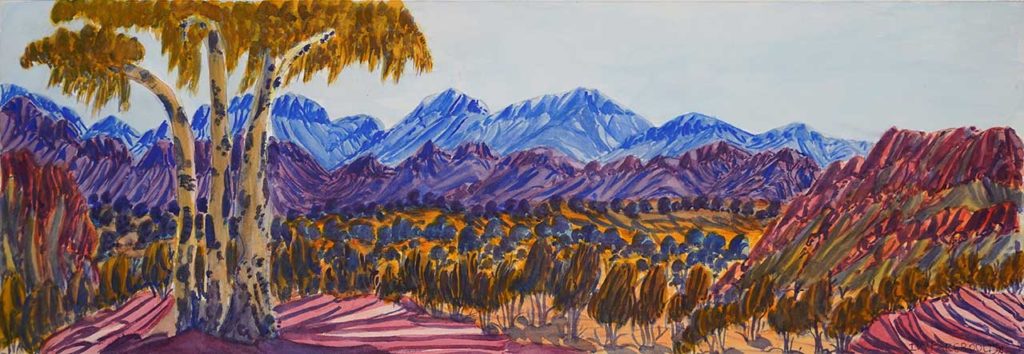
These works when we put them all together are a fabulous record of the ongoing legacy of Albert Namatjira. Each time a different artist takes on this subject matter, they always will be compared to Albert Namatjira and his brothers and other close relatives who formed that initial group.
That said, every time an artist takes on the subject matter they bring their own personal approach. Some of the paintings seem very expressionistic and dynamic. Others seem romantic and soft for a desert landscape. Some of the works seem to be painted in the clear light of mid-morning. Other paintings have the softer light that we get in early morning or towards sunset. All of these artists are extraordinary painters. It is a record of over eighty years of continuity for this family and close associates who paint their homelands using watercolour techniques.
In Australia in the 1960s this style of work was highly valued. To some extent it went through a time being out-of-fashion in the 1980s. At that time, the Desert Art Movement was gaining recognition and popularity.
I think we've come to a time when we can appreciate the different qualities that this type of painting brings. It holds our attention, not just as part of Aboriginal art, but as part of Australian art. It is also a reminder for us of how diverse Aboriginal art has become. It continues to grow and broaden as different artistic groups bring their own styles and their own stories to the table.
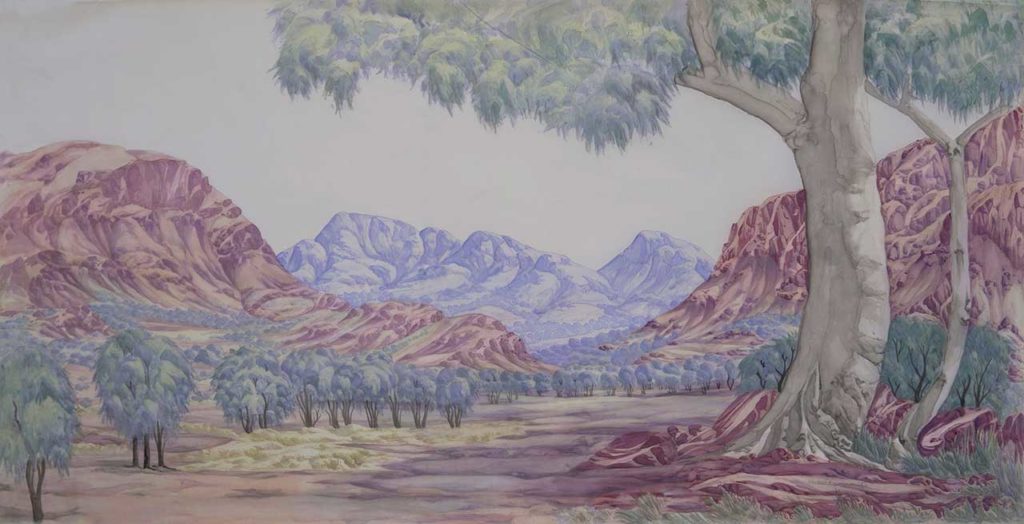
Included in the exhibition are two works painted on silk. The first one is by Hubert Pareroultja. The Many Hands art centre constantly look for ways that artists might re-interpret or find new techniques in which to express their images of country. This one is painted on silk and it has an incredible softness. The silk is transparent and it has a white backing behind. It could have been back-lit in a perspex light box. it is a very luminous work, the light comes right through, bringing the detail of the mountains and the cliff faces. It comes through the trees and the whole space created within the painting. It is an extraordinary thing. It's a lovely development to move from watercolour on watercolour paper to using the same medium but this time on silk. We have direct contact with the painting method and every stroke that the artist has put onto the silk.
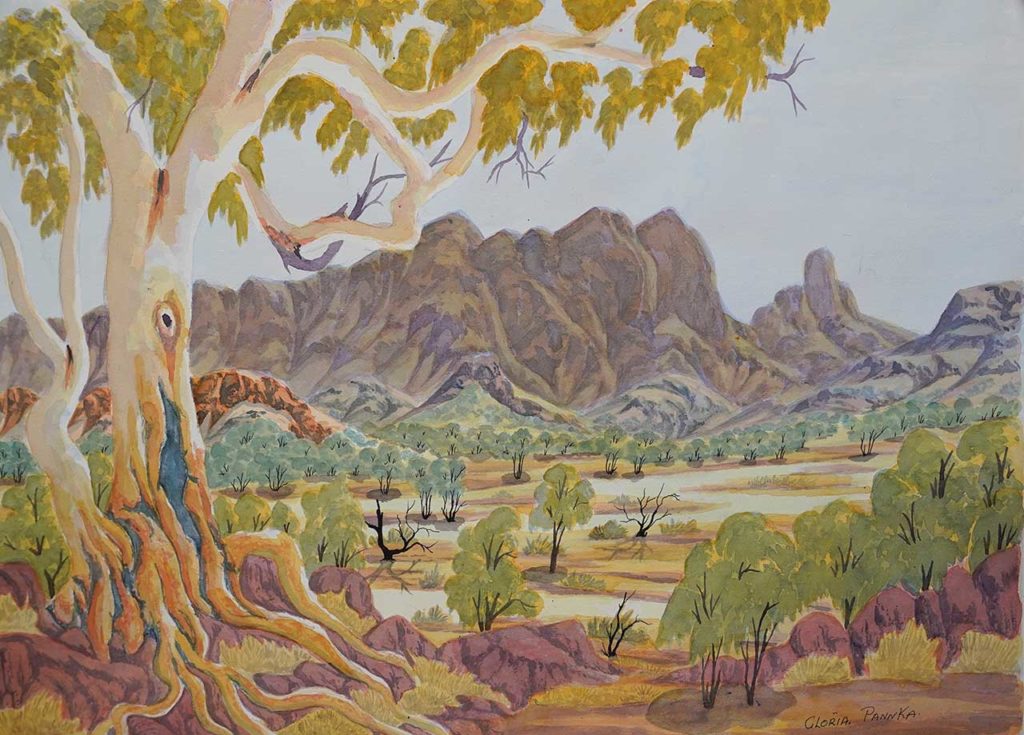
Gloria Pannka was busy working in the Many Hands art centre when I made the last visit and she has two wonderful works in this exhibition. One is a painting of Mount Sonder. There is a golden light about this painting. It has a sunshine yellow glow to it as well as revealing country in great detail. It is executed beautifully.
Along with the similarities between the two paintings that Gloria has in the show, the work across the range of artists varies stylistically. Once we look at the cross section of watercolours we start to pick up the values and traits of each of the individual artists.
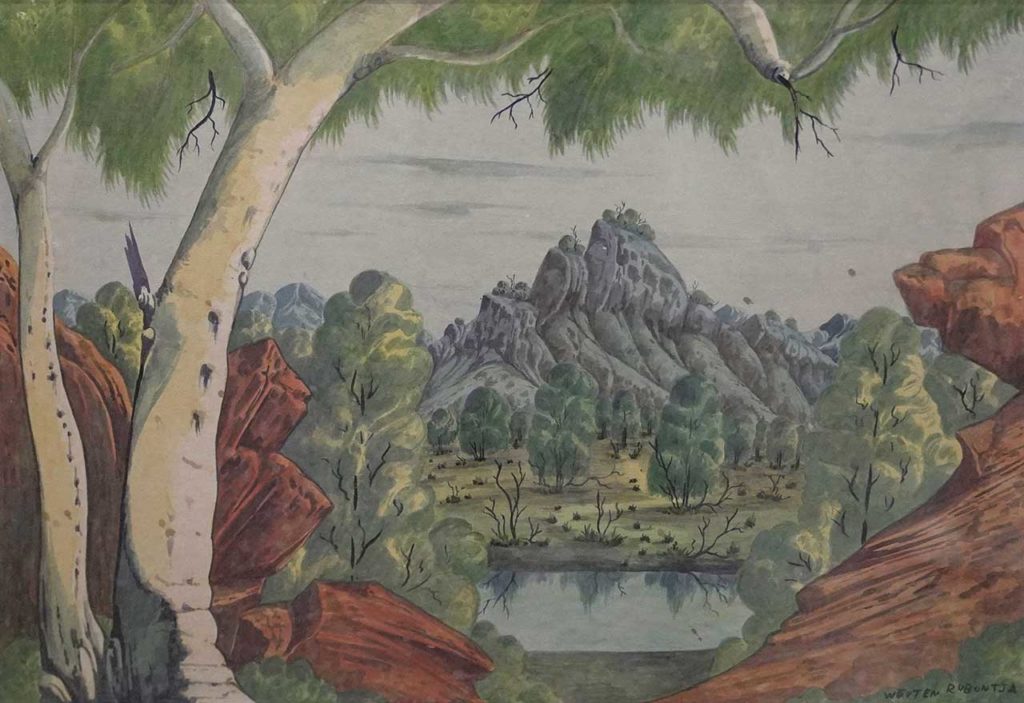
The second large work on silk is from Mervyn Rubuntja. This work is much bolder in approach. All the artists bring something different to the movement and Mervyn goes for large blocks of colour. The painting, rather than being a soft meander through the landscape, presents solid blocks of colour with the blue ranges of the background. There's a big purple-grey granite mound in the middle of the scene, and the foreground is painted in a solid tan colour.
Mervyn has isolated the various shapes in the painting and blocked those shapes in strong colour. He has bright reds and bright yellows in his paintings along with the purples and blues, often with outlining in dark colour. It just shows the subject matters is infinitely varied according to the stylistic approach of the artist. In the way that the shapes are strongly outlined and then filled-in as colour sections reminds us of the way a printmaker approaches their work in lino-block and relief printing. Here the artist is using just brush and a pot of colour, bringing his own distinctive style in creating a different look.
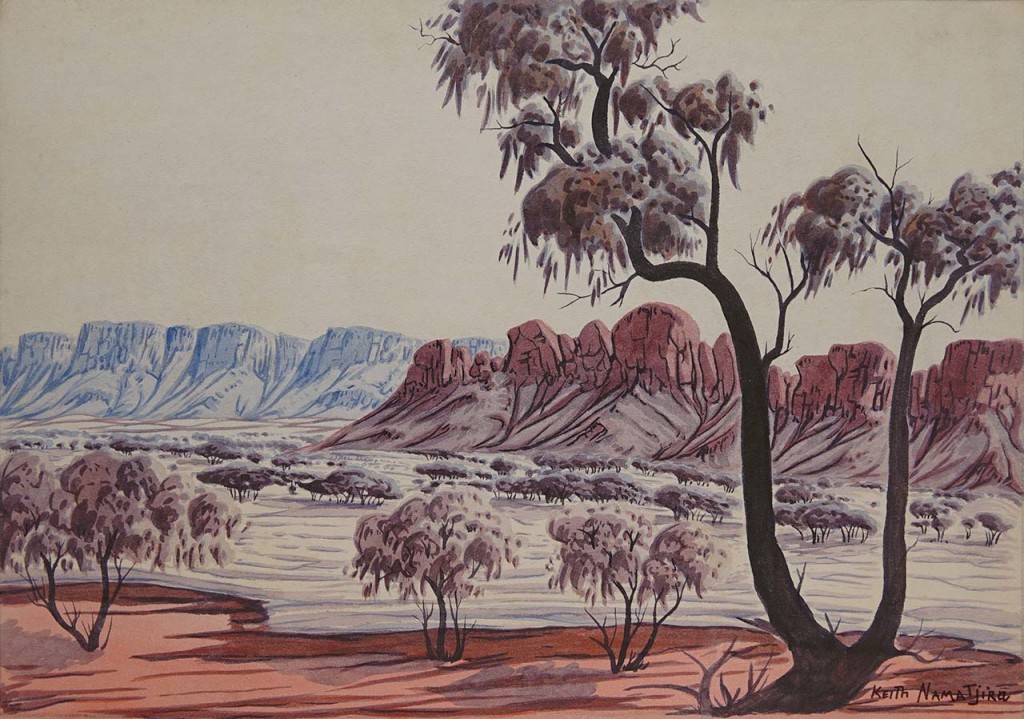
The exhibition includes five historical works from earlier generations of painters by way of comparison. These works are from the 1960s. The first work by Keith Namatjira (1938-1977), who is the son of Albert. You can see the draughtsmanship with careful attention to design, drawing and realism. You can see an attempt to put every shadow and every aspect of the mallee trees in the foreground of the rocky outcrops at the back.
This painting has the patina of age on it, it has a soft colouration to it. It gives us a good idea of the look of the painting made over fifty years ago. You can see that these are connected to the modern paintings, but then again the modern paintings are bringing something different to the conversation.
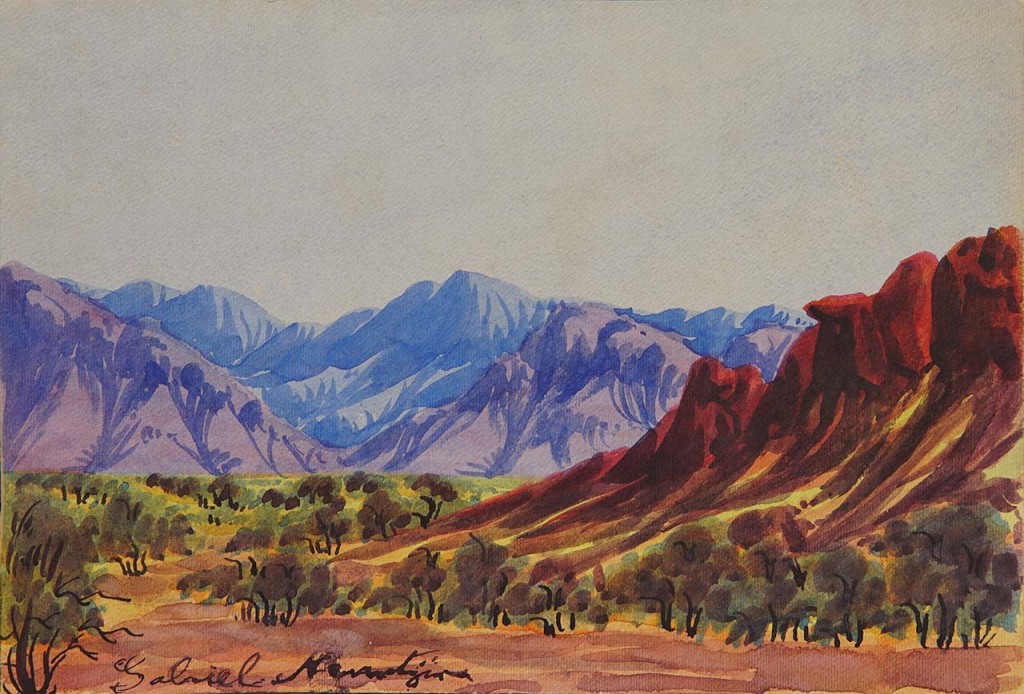
Next door to that is a painting by Gabriel Namatjira (1942-1969) grandson of Albert. This is a lovely small image of the West MacDonnells, very compact. It's a work that is 27 cm across. It is one of those perfect snapshot paintings you could have in a time before there was a colour camera to record this sort of landscape.
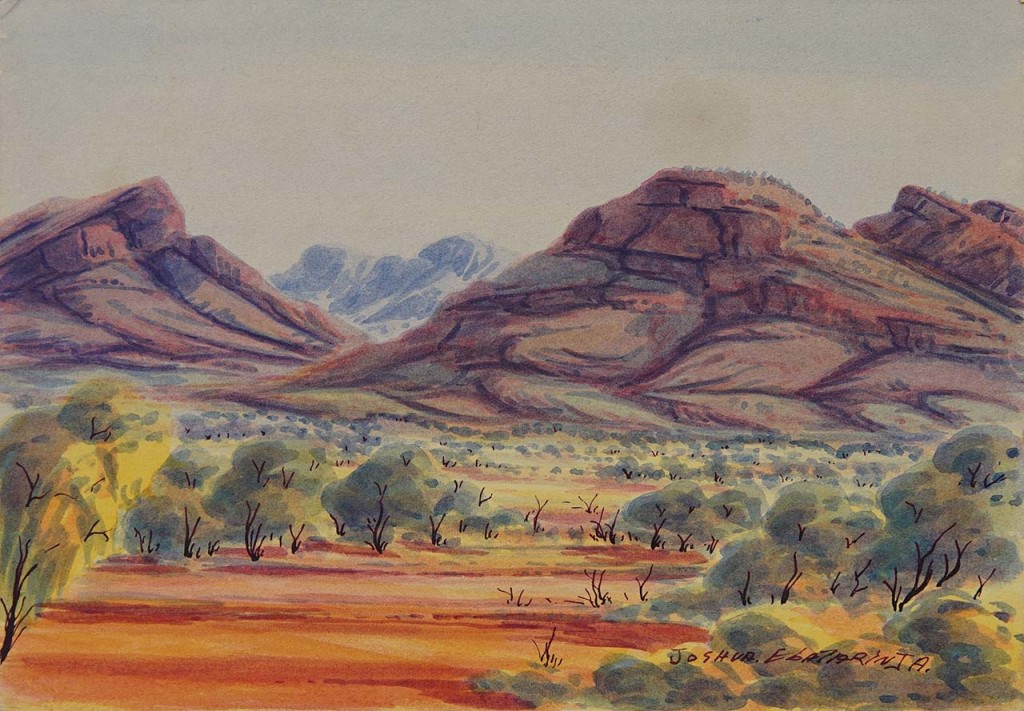
The exhibition includes another work by Joshua Ebatarinja (1940-1973) the son of one of the original paintiers Walter Ebatarinja. It is the same scale as the work by Gabriel Namatjira. You'll see the careful attention to detail in the sweeping foreground of mallee scrub and red dirt. The powerful rocky outcrops dominate the midfield.
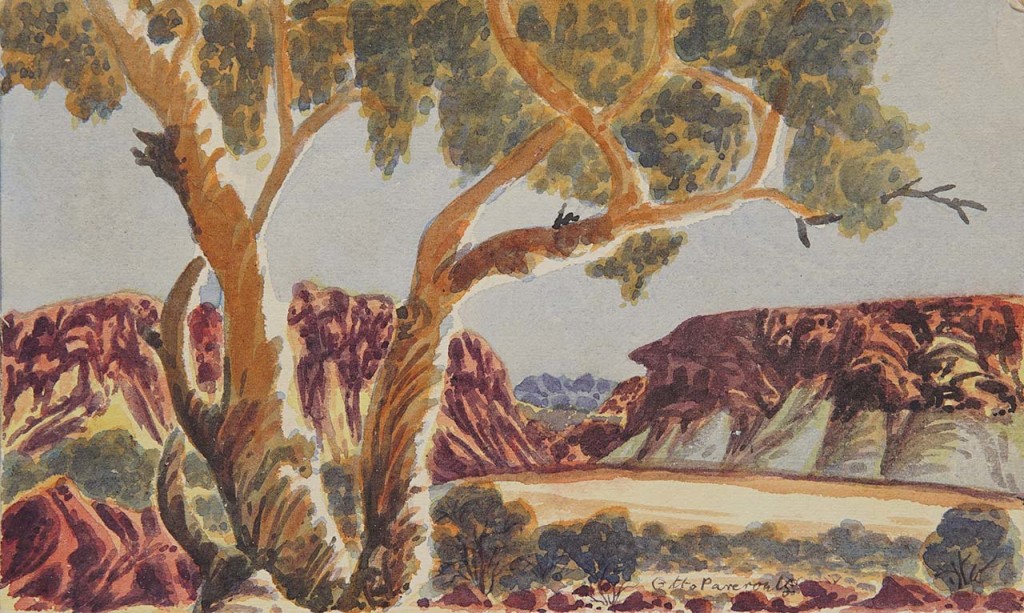
This is a work by Otto Pareroultja (1914-1973) one of the original group who first painted in the 1940s. This painting is in a more realistic vein. There is fabulous detail in a tiny range way off in the background, yet we can see all the forms expressed there. The whole painting is only 24 centimetres across. The scene is dominated by a big white gum in the foreground with careful attention to the way the light falls through the tree and the foliage. This is a classic example of that realist style of watercolour painting, closely tonally-connected through all the different degrees of distance from the viewer. It is a beautiful work.
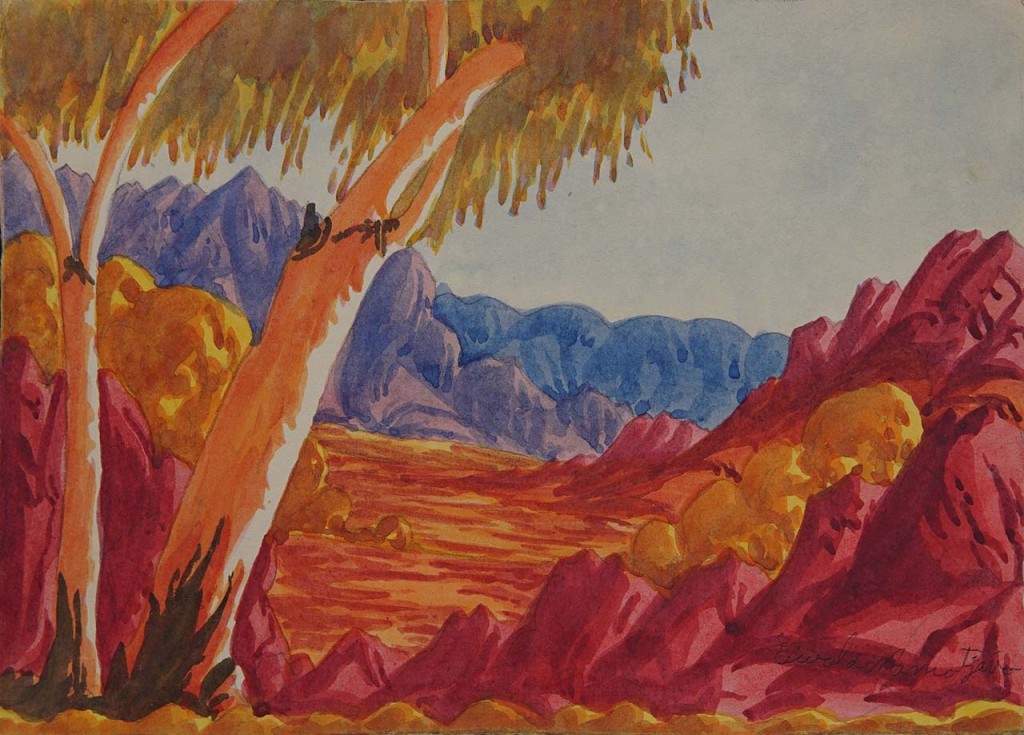
Finally of the historical works we have one by Ewald Namatjira (1930-1984) another of Albert's sons. Interestingly this is much more densely coloured, so it is bolder than the other works. It is dominated by the presence of crimson red colours. There are the blue ranges at the back and river gums at the front.
The whole painting is lit up by a red light that suggests that it is a hot landscape and quite probably viewed at sunset. In this work the artist is trying to extract something different from the landscape, a different mood, a different impression, just a different way of feeling about the country.
